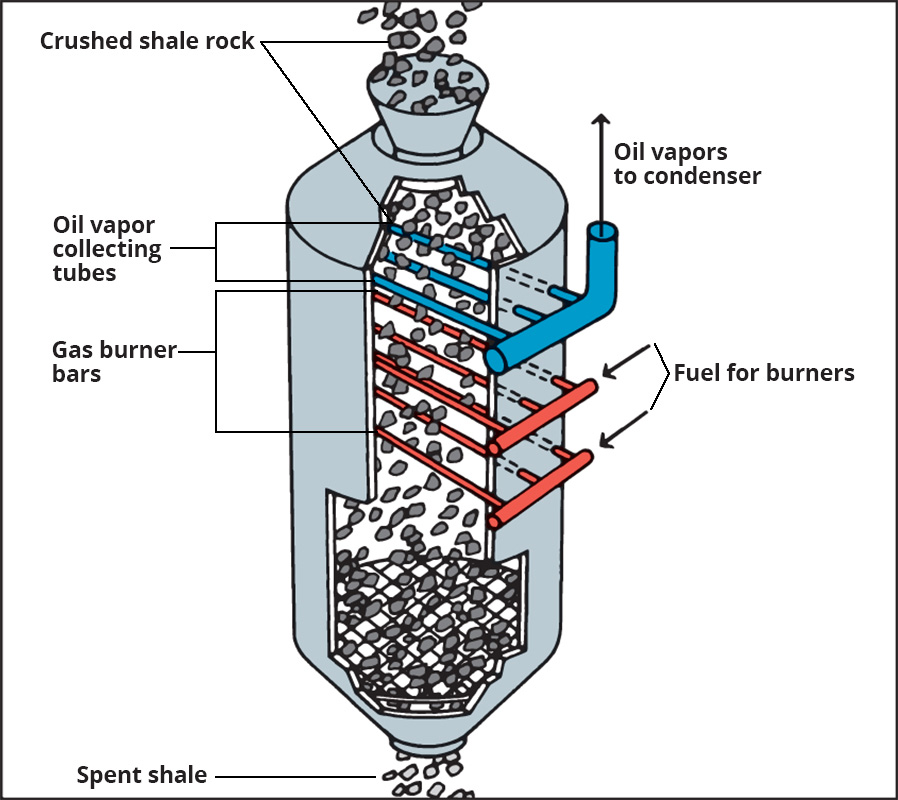Oil shale is a soft, fine-grained sedimentary rock from which oil and natural gas are obtained. Oil shale consists of light brown layers of silt and darker layers of kerogen, a waxy organic substance that originated from the remains of cyanobacteria (blue-green algae) and other living matter. Vast deposits of oil shale occur in southern Brazil, northeastern China, Estonia, Sweden, and the United States.
The heating of oil shale releases crude oil and natural gas from the kerogen. However, obtaining useful amounts of oil requires processing huge quantities of rock, consuming significant amounts of energy, and often using large volumes of water. As a result, producing the oil is expensive and can cause significant harm to the environment. The high cost of production has limited the commercial use of the oil. Only a few countries now use oil shale.
Two methods are used to obtain oil from oil shale. In the first process, the mined rock is crushed, transported to a processing plant, and heated to temperatures higher than 900 °F (480 °C). The heat drives oil vapors from the rock, and they condense into liquid oil. The second process is called the in situ (in place) method. In this method, miners dig a hole into the bottom of a shale deposit. They then dynamite the deposit, which collapses and shatters. A mixture of air and gas is pumped into the deposit and ignited, heating the rock. Oil vapors then separate from the rock and condense, and oil is pumped out.

